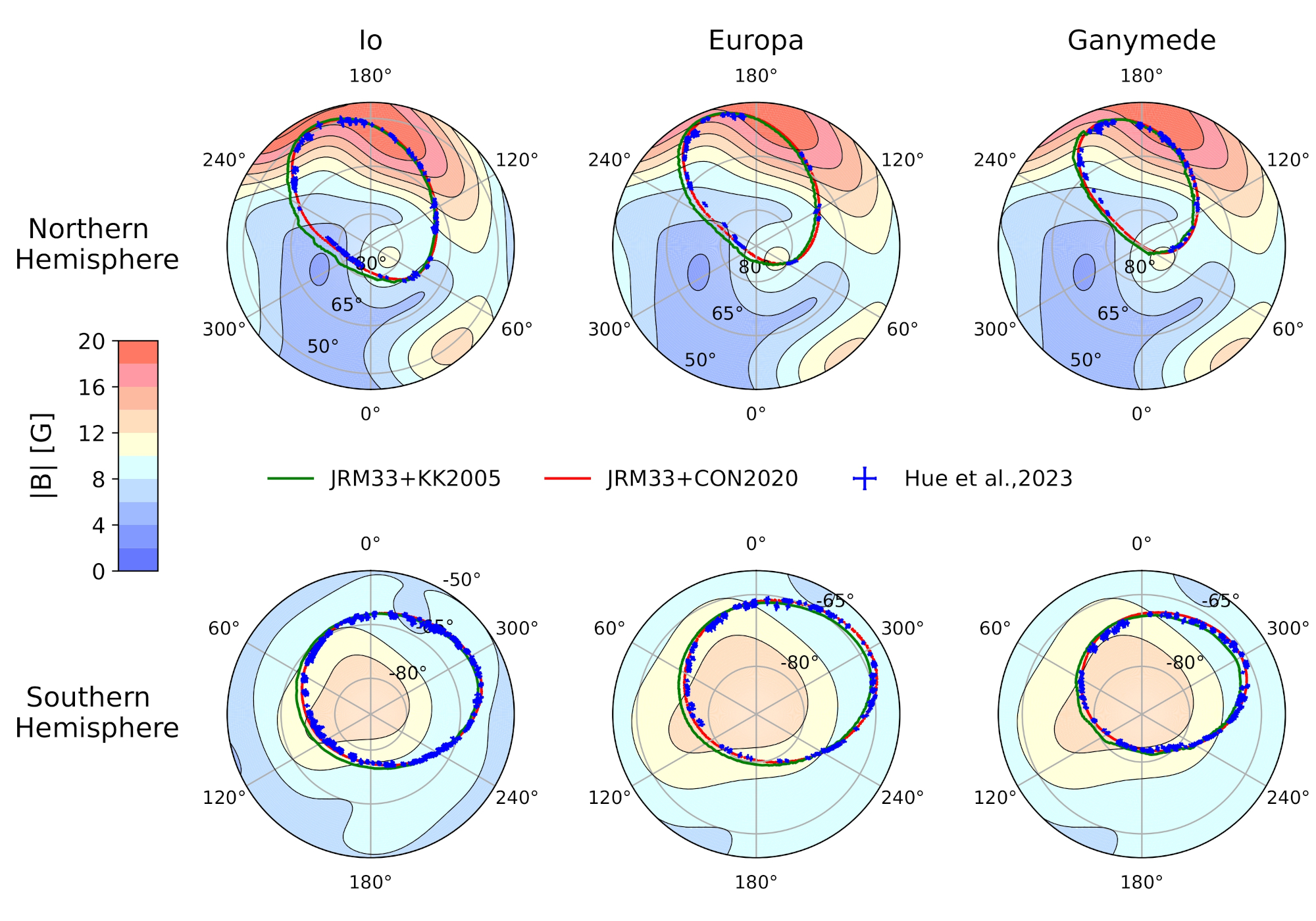Electromagnetic mapping of auroral emissions from Jupiter’s moons updated by Juno
Jupiter’s intense magnetic field gives rise to the largest magnetosphere in the solar system. Within it, the movement of ions and electrons is governed by the magnetic field. A precise understanding of the configuration and properties of the magnetic field is therefore crucial to the study of the movement of charged particles in this environment. Since the Pioneer 10 probe, the first to explore Jupiter’s magnetosphere in situ in 1973, numerous missions have followed. Their respective data have made it possible to build various models to map the magnetic field in the giant planet’s magnetosphere as accurately as possible.
In a study recently published in the Journal of Geophysical Research: Space Physics, a team of IRAP scientists in collaboration with researchers from the Laboratoire d’Astrophysique de Marseille and the Southwest Research Institute tested the accuracy of these models on in situ observations from the Galileo and Juno missions. In particular, they examined the accuracy of the magnetodisk models, the thin plasma disk orbiting Jupiter and generating a magnetic field in addition to that created by Jupiter’s powerful internal dynamo. The team also studied the accuracy of the field models in predicting the location of the auroral footprints of the moons Io, Europa and Ganymede on the planet’s poles.
The team showed that these auroral footprints, observed by the UltraViolet UVS spectrometer on board Juno, were well mapped when Jupiter’s internal magnetic field model was coupled with the most recent magnetodisc model, derived from Juno’s magnetic field data. Deviations related to local time, i.e. the Sun’s position, were also found to be smaller than those theorized by some of these models. A comparison between magnetic field measurements obtained by Juno and Galileo and model predictions is also presented, showing that in the outer magnetosphere (R > 30 RJ), the model based on Galileo data proves to be more accurate. These results provide a valuable diagnostic for the analysis of ongoing Juno data and for planning future JUICE mission observations.

Further Resources
- Publication : Rabia, J., Nénon, Q., André, N., Hue, V., Santos‐Costa, D., Kamran, A., & Blanc, M. (2024). Influence of the Jovian current sheet models on the mapping of the UV auroral footprints of Io, Europa, and Ganymede. Journal of Geophysical Research: Space Physics, 129(1), e2023JA032041.
IRAP Contacts
- Jonas Rabia : jonas.rabia@irap.omp.eu
- Quentin Nénon : quentin.nenon@irap.omp.eu
- Nicolas André : nicolas.andre@irap.omp.eu






